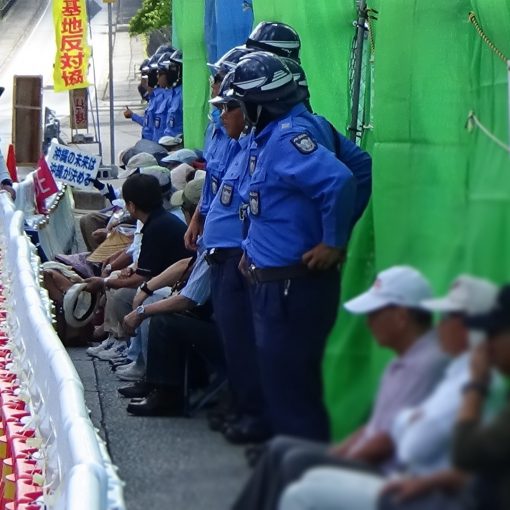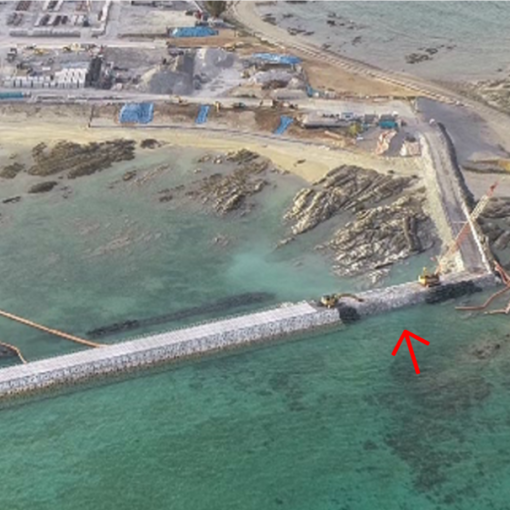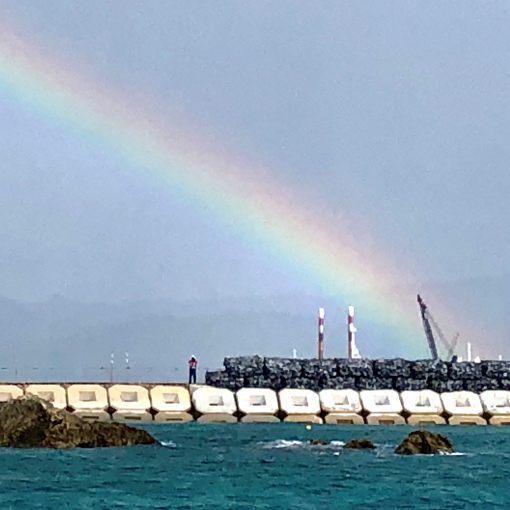75 years ago, Okinawa turned into Hell. The blue sea off the coast of Mabuni in Itoman City was filled with black warships of U.S. Forces. People, threatened by artillery shells and coming danger of U.S. soldiers’ landing, ran around for life. Appalling land battles were repeated and civilians were drawn into them by Japanese army. U.S. soldiers were not the only threat for life. Japanese soldiers forced them to commit “mass suicide.” Some people were accused and executed as a spy for the U.S. military. Thus, one of the fourth of the people in Okinawa were perished. On June 23, top generals of Japanese army committed suicide, resulting in the end of the war. As Okinawa Memorial Day, June 23 is a day to remember the lives lost during the Battle of Okinawa.
On the Cornerstone of Peace located on Mabuni Hill, the names of over two hundred and forty thousand people who lost their lives in the War are inscribed. New names are added each year, when their death is confirmed. The inscribed names are not only the people from Okinawa Prefecture, but also soldiers from the mainland Japan, U.S. soldiers, as well as the people from the Republic of Korea, North Korea and Taiwan.
As Okinawa has pledged “Never Again War,” the day of remembrance is the most important day for Okinawa. This year the annual memorial service was held on a scaled-down basis amid the coronavirus pandemic. It’s a day for all people in Okinawa to remember the past and to think about the present.


(In front of the Camp Schwab Gate)
In the heavy rain on and off, nearly 20 people in rain gear joined a sit-in protest. Due to COVID-19 the number of participants has been obviously decreased. However, as the state of emergency was lifted and the restrictions of travels were loosened this week, the participnts from the mainland have become more visible. Although the current ordinary Diet session was ended despite the calls from the opposition for an extension, the criticism against the Abe administration, especially against their corruption and misconducts, has been more and more inceasing. At the gate the speeches by the participants have been energetic with their anger and cynicism against the Prime Minister Abe, who has shown a shameful behavior without shame. More fight to overturn the Abe regime who have been forcing to build an absurd new base, is required from Okinawa. 173 truckloads of construction materials were delivered.
(Ryukyu Cement Awa Pier)
In the continuous rain total 20 people or so gathered at the entrance and the exit and protested against the dump trucks which delivered earth and sand. 8 vehicles of GoGo drive members slowly moved at the exit in order to slow down the move of the trucks trying to come out from the pier. At one point approximately 40 trucks were trapped inside of the pier, which significantly delayed the transportation of earth and sand. Although after the resumption of the construction, for 5 continuous days they worked until 8pm for the delivery, today they finally returned the usual working schedule. 708 truckloads of earth and sand were loaded to 3 cargo ships, which departed for the Oura Bay.



(Motobu Shiokawa Pier)
They inefficiently continued to work loading to a self-propelling grab hopper barge, which is used once a month. In addition, the weather was bad. They stopped working before noon. 55 truckloads of earth and sand were loaded.


Number of dump trucks to date and percentage against the total
The estimation calculated on the basis of the number of ruckloads serves only as a reference.
Number of dump trucks which made delivery from December 2018 to the end of December 2019 114,601(1.39%)
| 20(Sat) | 22(Mon) | 23(Tue) | 24(Wed) | 25(Thr) | 26(Fri) | |
| Awa | 673 | 708 | ||||
| Shiokawa | 0 | 55 |
| Number of dump trucks ※ |
Weightt of earth/sand
※① |
Converted to volume
※② |
Volume per Total
※③ |
| 187,589 | 937,945t | 468,973㎥ | 2.274% |
※ Cumulative since Dec. 1, 2019
※① Calculated by assuming that the average truckload per dump truck would be 5 tons
※② Calculated by assuming that a specific weight of soil/sand set to be 2
※③ Percentage against 20.620.000m3, the total volume of earth and sand required for the landfill.





